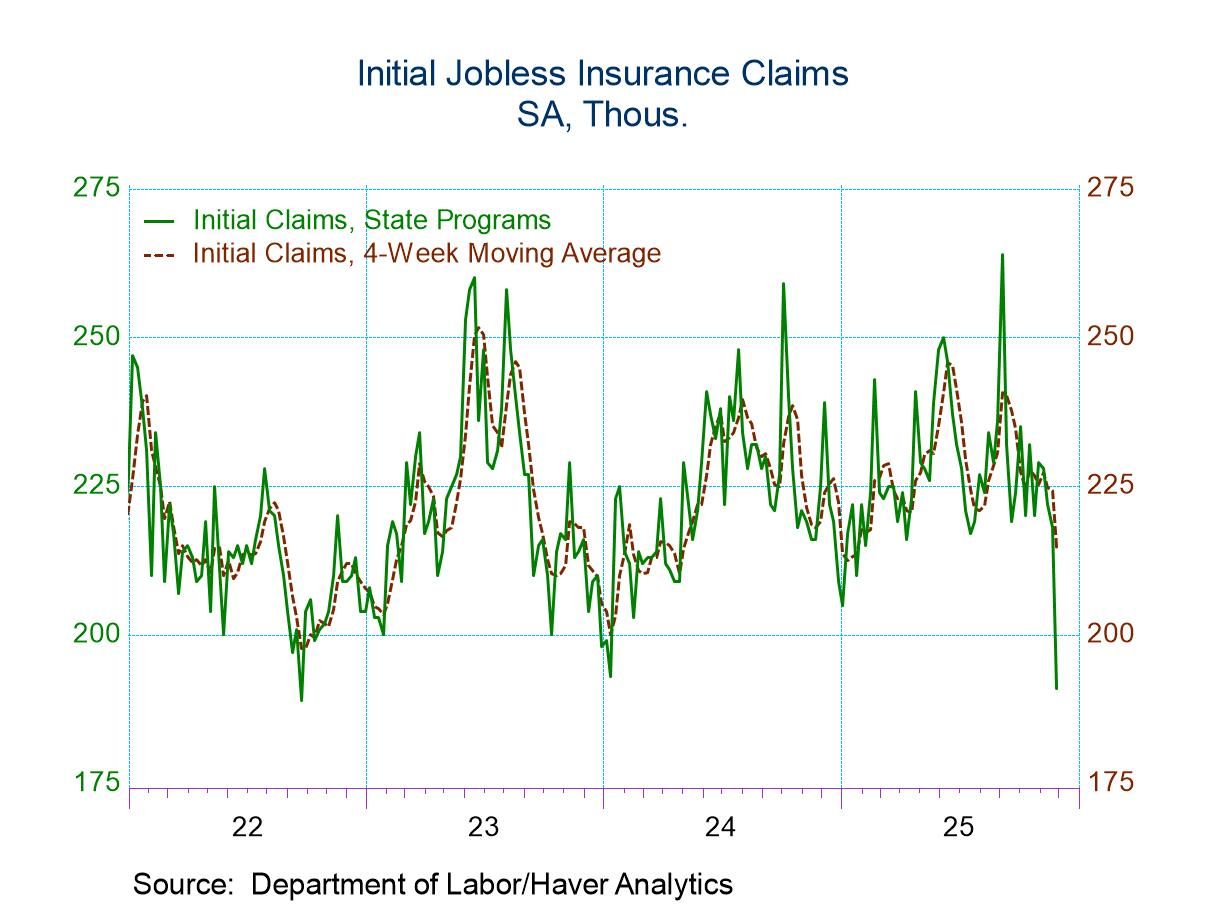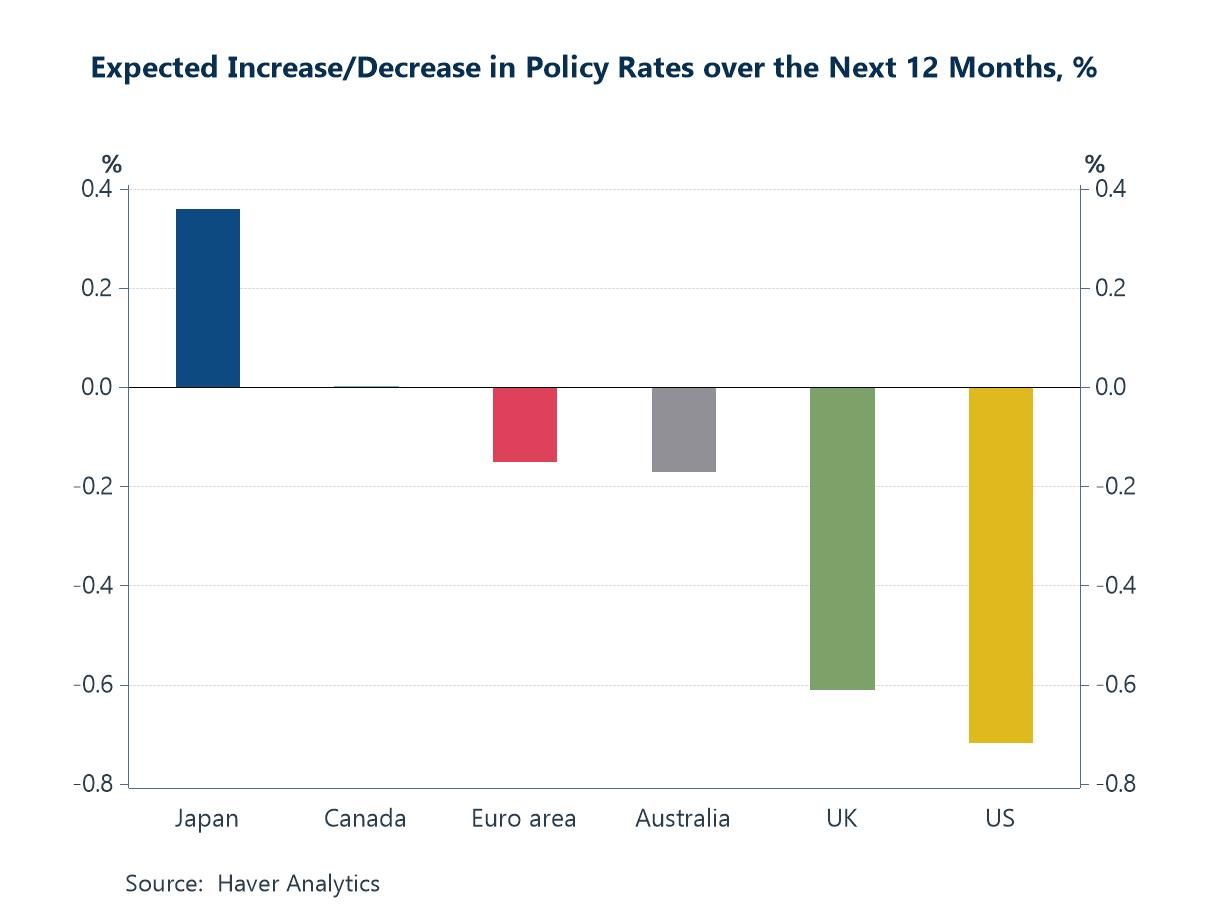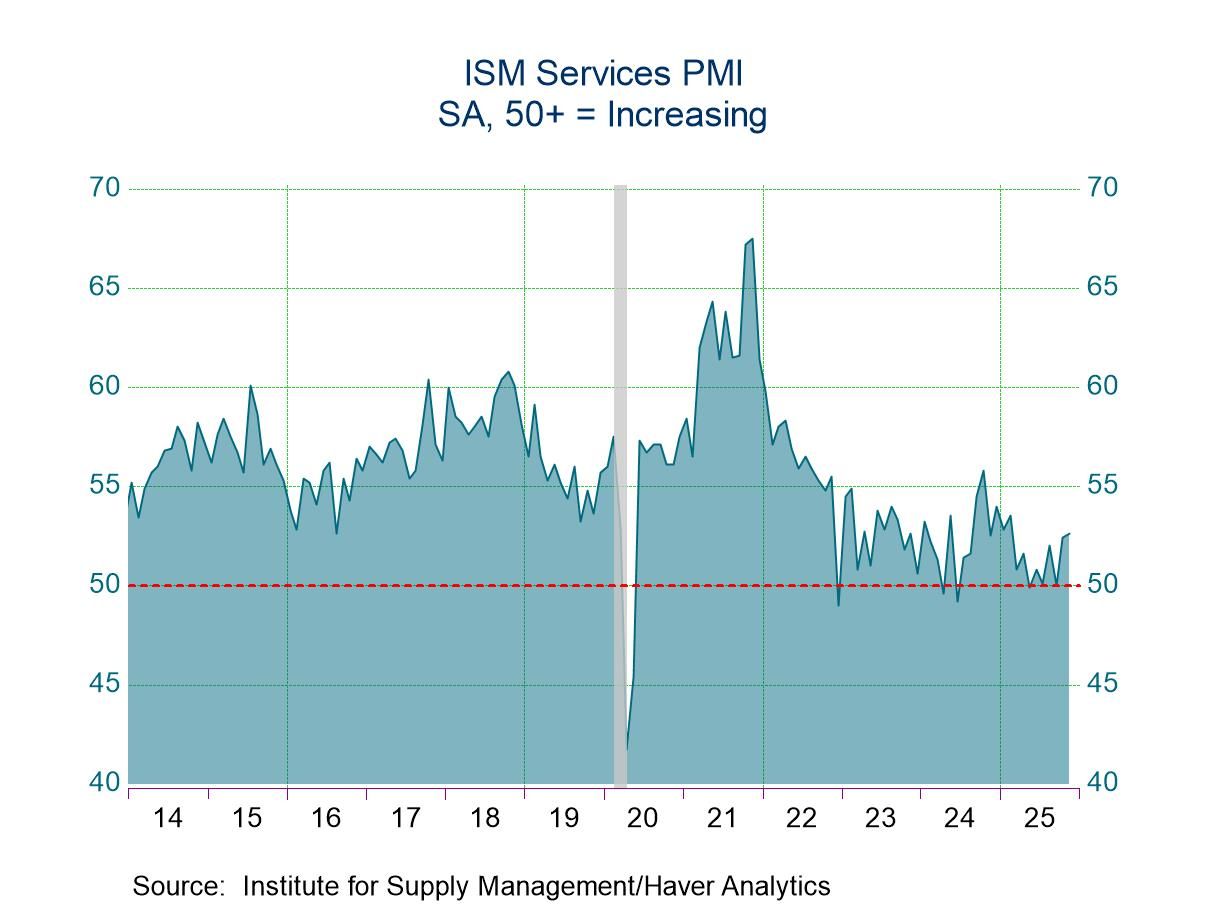 Global| Jul 02 2025
Global| Jul 02 2025Unemployment Rates Remain Low, Stable

The EU unemployment rate fell to within a tick of its all-time low in April at 5.9% and stayed there in May. In the European Monetary Union (EMU), the unemployment rate in April fell from 6.4% in March to 6.2% in April, its all-time low; then in May it ticked up to 6.3%. This can hardly be construed as a weakening of the European labor market.
At the same time, the EMU HICP has registered 2% growth year-over-year in June. In May it was at 1.9% with the core up at a 2.4% rise year-over-year. In June, Italian and Spanish core readings are 2.1% and 2.2%, respectively. In Germany, ex-energy inflation is at 2.5%. The core for the EMU is not yet available but clearly inflation, broadly considered, is very close to touching all the bases the ECB wants it to touch. And at the same time, Europe’s rate of unemployment is at or near all-time lows at least since the EMU was formed. That looks almost like policy nirvana.
The Monetary Union is experiencing low inflation rates even for those countries (largely Mediterranean countries) that had stubbornly high inflation rates in the past. Interestingly, those formerly high-inflation countries have substantially reduced their rates of unemployment. In the U.S., it was the long low, extra-low, inflation span after the Great recession that brought the inflation rate down slowly but eventually to 50–60-year lows. The U.S. rate got to 3.5% under Trump and briefly to 3.4% under Biden. Now with similar inflation progress -and for the EMU, there is a long train of progress not looking just since Covid but looking at the collective progress since the EMU was formed.
Among the 12 EMU members listed in the table, only three Luxembourg, Finland, and Austria have unemployment rates above their median rate compared to data since 1994. Spain’s unemployment rate is still in double digits at 10.8% but is much lower than it used to be. The Greek unemployment rate is at 7.9%; Portugal’s is at 6.3%. Spain’s unemployment rate is in the 15th percentile of its ordered queue of rates; the Greek rate has been lower only 3% of the time; in Portugal, the current rate has been lower less than 20% of the time. Low inflation and low unemployment go hand in hand. But when they diverge, the solution is not to coddle unemployment. It is to backdown inflation to allow the economy to move forward thereafter and prosper with lower inflation and lower unemployment in the future. I don’t think this lesson has been broadly enough learned, but looking at Europe and the U.S. the lesson simply presents itself with exceptional clarity.

Robert Brusca
AuthorMore in Author Profile »Robert A. Brusca is Chief Economist of Fact and Opinion Economics, a consulting firm he founded in Manhattan. He has been an economist on Wall Street for over 25 years. He has visited central banking and large institutional clients in over 30 countries in his career as an economist. Mr. Brusca was a Divisional Research Chief at the Federal Reserve Bank of NY (Chief of the International Financial markets Division), a Fed Watcher at Irving Trust and Chief Economist at Nikko Securities International. He is widely quoted and appears in various media. Mr. Brusca holds an MA and Ph.D. in economics from Michigan State University and a BA in Economics from the University of Michigan. His research pursues his strong interests in non aligned policy economics as well as international economics. FAO Economics’ research targets investors to assist them in making better investment decisions in stocks, bonds and in a variety of international assets. The company does not manage money and has no conflicts in giving economic advice.






